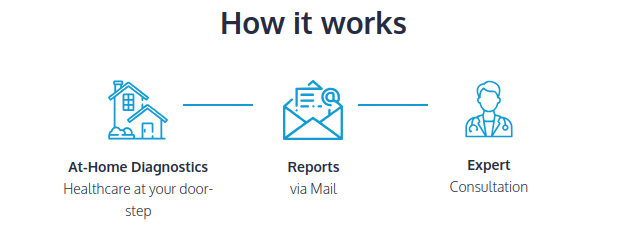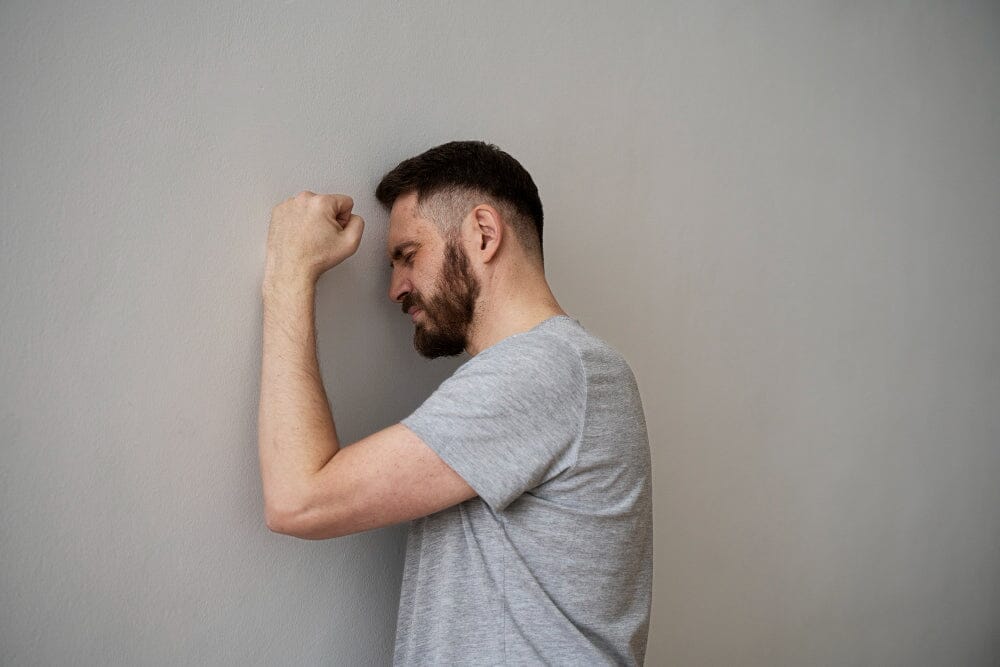Osteoporosis Bone Health Monitoring Test at home
Test Parameters


About the Osteoporosis Monitoring test
Purpose: Monitor bone health, arthritis, osteoporosis, osteopenia related conditions
Osteoporosis is a serious medical condition that causes your bones to become weaker over time. They become more brittle with external stresses, such as falls or bending, causing fractures. If you have osteoporosis then your risk of serious injury rises, with potential long-term damage in the hip, wrist, and spine regions.
While your bones are living tissues with their own blood vessels, cells, and minerals, they experience breaking down and replacement at the micro-level. The condition of osteoporosis develops when loss of old bone material isn't replaced by the creation of new bone. Bone loss occurs at a much faster rate when compared to the national average within the age group, impacting wellbeing, lifespan, and health.
Test Markers
Beta 2 Crosslaps (Bone Loss Marker)
Beta-CTx is released into the bloodstream during bone resorption and serves as a specific marker for the degradation of mature type I collagen.
Why is this important
Elevated levels indicate increased bone loss and are associated with osteoporosis, osteopenia, paget disease, hyperthyroidism, and hyperparathyroidism.
P1Np (Bone Formation Marker)
When bone tissue is renewed, small fragments of the new collagen are found in the bloodstream, including P1NP. The higher the P1NP level in the blood, the more bone formation is taking place.
Why is this important
Its a direct marker for bone formation and helps in measuring the intervention efficacy
Who should do this test
-
People who have symptoms of back and joint pain
-
Women who are post menopausal
-
People with a family history or fracture or arthritis
-
Individuals who have been advised by their physician
What causes osteoporosis?
There are several reasons that can affect your risk of developing osteoporosis, including the lifelong levels of calcium and vitamin D in the body. Lower intake of vitamin D and calcium and vitamin D increase risk factors for osteoporosis, as they contribute to bone density, bone mass, and injury healing.
Key factors, such as restricting food intake and being underweight can also put you at risk of osteoporosis, making you more likely to experience symptoms earlier. Other factors, including gender, family history, age, and body frame can also mean that you have a higher risk of osteoporosis. Hormonal factors, such as low oestrogen (post-menopause), thyroid issues, poor gut health, etc. also increases the risk of osteoporosis.
What are the warning signs of osteoporosis?
There are several warning signs that patients and caregivers should be mindful of when it comes to osteoporosis. A loss of height owing to vertebrae collapsing in the spine is a key issue. If the person appears to be constantly slouched or stooped in posture, then there may be a risk of osteoporosis.
Chronic back pain and inability to heal long term injuries are also warning signs of osteoporosis in the body. Breaking a bone due to a minor fall is also a clear sign of bone loss and bone density issues. Weakness in the body, especially when walking or moving around, can also indicate issues with osteoporosis. Seamless mobility in low-impact zones is a challenge for people with osteoporosis.

What are the complications of osteoporosis?
Osteoporosis can increase the risk of bone fractures, specifically in the wrist, fingers, spine, hip, or thigh. Osteoporosis fractures are more complex and don't heal within the appropriate window. There may also be issues with height reduction or an inability to sit straight for extended periods. Disabilities and higher risk of death are also present in the case of osteoporosis.
How do I lower the risk of osteoporosis?
People with an increased risk of osteoporosis can take preventative measures to avoid escalation and worsening of the condition. You can reduce the risk of osteoporosis and improve the function of the bones with the right approach.
Improving nutritional balance
By incorporating meals that are higher in Vitamin D and calcium, you can reduce your risk of developing osteoporosis over time. You may also test these levels regularly to prevent an increase in risk if you are experiencing key symptoms.
Performing medium intensity exercises
It is recommended to opt for a weight bearing exercise that specifically strengthens muscles and bones over time. Cardiovascular exercises, such as jogs and walks, with light weights can also help improve bone health.
Improving lifestyle
It is important to quit smoking and excessive drinking, especially if you are experiencing chronic symptoms of osteoporosis. Lifestyle changes can improve your chances of strengthening bone density, as poor lifestyle choices can increase the risk of developing osteoporosis.
Pre-testing and family history
Testing regularly for osteoporosis can help you start your treatment early, while also preventing rapid degeneration of bone health. You should also review your family history of osteoporosis and get tested at an earlier age if you are starting to experience symptoms.
Dynamic stretching exercises
Exercises that are designed to help strengthen your joints and improve bone mineral density are key to improving risk factors. Yoga and active stretching classes can help improve bone strength and circulation.

Is osteoporosis curable?
Timely diagnosis and treatment can slow down the bone loss process. Additionally, the availability of multiple forms of effective treatment options have shown that it is a curable disease. You should get tested immediately to begin talking to your specialist about osteoporosis.
What is osteopenia?
When bones are weaker than normal, in terms of mineral density and strength, it can be diagnosed as osteopenia. It can also be the precursor to osteoporosis. There are more than 10 million cases per year in India alone.
What are the treatment for osteoporosis ?
The most effective way to treat osteoporosis is with a combination of medication and lifestyle changes. Drugs known as bisphosphonates are often the first line of treatment. Hormone therapy oestrogen, especially when started after menopause can help maintain bone density.
What is the life expectancy of a person with osteoporosis?
People with osteoporosis have an average life expectancy in excess of around 15 years in women under the age of 75 years and in men under the age of 60 years. It is important to strengthen your bone density over time, with the right treatment and therapeutic protocols.
Are home visits safe for patients in these times?
The sample collection field team always follows the best COVID appropriate protocols when entering your home. These include standardized practices such as masks, PPE kits, sanitation, and following measures outlined by governing bodies.
How will I receive the test report from the lab?
The reports of osteoporosis tests will be delivered directly via email to your account. You should review the results of the report and talk to your doctor about the risk of osteoporosis.
How accurate are the test results ?
The test results are highly accurate, which is why it is ideal to get tested immediately. The sample is collected by qualified phlebotomists and tests are performed at high quality NABL labs for accurate results.
Where can I buy an osteoporosis test in India online?
You can buy an osteoporosis bone health test instantly through MyDiagnostics.in. The discounted rate of INR 2499 provides complete testing coverage for key markers that can help detect osteoporosis with high accuracy.
-
Individuals experiencing symptoms such as chronic back pain, inability to heal properly, lack of mobility, etc.
-
Senior citizens who want to check if they have osteoporosis.
- No special preparation or fasting is required for these tests
- Avoid Biotin Supplements 10-12 hours before the test






